-
Posts
19,758 -
Joined
Content Type
Forums
Detector Prospector Home
Detector Database
Downloads
Posts posted by Steve Herschbach
-
-
44 minutes ago, Chase Goldman said:
All that being said, I know very experienced detectorists like Steve and Andrew Benson who can manipulate controls on the fly on the GPX 6000 (which has no explicit iron check features) to derive ferrous telltale responses. I believe this does require a DD coil to be attached, but Steve or Andrew can set the record straight on that.
No I hate the GPX 6000 DD coil and only used it long enough to decide I hated it. Hate is a strong word I rarely use but that coil truly sucks so it is appropriate. I do most ferrous vs non-ferrous work with all PI detectors strictly with my ear. I never use the Minelab or Axiom ferrous functions as totally untrustworthy for nugget detecting. I have seen 1/4 ounce plus gold nuggets called ferrous by those type systems and that's too much money to give up based on a poor result. Missing a bullet or a coin is one thing, missing a $500 nugget another. I honestly forget the feature exists as I never use it.
Since I am going by tones only the E1500 method of supplementing that audio indication with a 0-99 number plus a continuous response graph the E1500 will in my mind only supplement and improve what I am already doing. It will add a visual to my audio information and should allow me to be even more accurate. It does not make me rely on the detector saying good or bad, it only adds to what I am already doing. I'll simply look at the target id number and watch what that graph is doing in addition to hearing what I am hearing, and make better decisions. That's the plan at least. It is like hunting with full tones and VLF - I do not like notching out targets, just give me all the info and let me decide.
DD coils stopped being a thing in nugget hunting circles starting with the GPX 4000, when Minelab started optimizing for mono as almost always getting better depth than DD coils. So while the relic hunters and such in urban areas will maybe miss DD, almost everyone I know runs mono 99% of the time anyway. The only DD I played with much in the last decade as been the Axiom 7x11 FC DD because of it's unique features, but at end of day I have gone back the the 7x11 mono as being deeper and having more consistent audio responses.
I also very much like monos as they allow me to eliminate small surface targets with a double blip signal as these small surface targets pass under each edge of the coil. It is an immense aid in not digging surface trash as I focus on targets that only read in the center of the coil, which means they are larger and have depth to them. I am currently using an Infinium with 14x10 mono at Tahoe because I eliminate all the surface light aluminum foil targets and hair pins with this methodology, only digging centered softer targets that are the deeper better ones I am after. It’s a specific type of discrimination I find extremely usual and I can only do it with mono coils due to the edge sensitive nature of the coil. I got the Infinium for Tahoe because the Axiom is actually too powerful and overloads with the mono coils, forcing me to use the DD coil. Not a problem with the Infinium, nor as a side note, the Impulse AQ, which uses an 11” mono. Lived that detector but refuse to get another until Fisher sorts that mess out, so Infinium it was. That 14x10 mono is one of the sweetest I’ve ever run.
So while I fully appreciate what you and Jeff are saying I personally will not even notice lack of DD capability as I really don't use them anyway. In the last 20 years of PI detecting I'd say I have had a mono coil on my various PI detectors for 99% of the hours run and that is a lot of hours. I have to except the GPZ 7000 and the DOD coil because except for X-Coil that is all you can run on a GPZ 7000.
-
11 minutes ago, DSMITH said:
Reading through this thread and all the replies, I can almost see this as a replacement detector for the VLF's I use, am I wrong in my Thinking on this ???, I could see using this new detector instead of a VLF
Gonna keep an eye on this and @phrunt and @Steve Herschbach reviews on this one
I doubt it is a VLF replacement for most people. The target id system is nothing like a VLF and does not separate ferrous from non-ferrous. See my prior post and links as regards that. This is for the PI enthusiast. I almost never use a VLF and prefer a PI for almost everything I do, including park detecting for coins. The applications where a PI is just no good I simply don't do, as I'd rather go use a PI. So if you have used PI a lot and know what that entails then this may be right up your alley. But if you are someone who has mostly used VLF (not saying that is you) then thinking this replaces VLF is not really the way it is. It is more like different strokes for different folks.
Simple question. Could you ditch all your detectors but the Axiom and be happy? If not, then this will not be all that different.
-
I never had a Sadie but always wanted one. I really like poking around with small coils, really focuses my mind. So I am getting this detector purely to have a machine that runs a Sadie coil since this looks like a perfect match for that coil.
I also want a water neutral 8” or 11” coil for wading. I have not figured that one out yet. Maybe I can find someone who has a Coiltek Platypus they will part with.
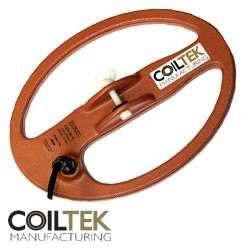
-
Normally a detector has a fixed parameter that coils must meet and since "dumb" coils always vary to some degree, you get performance mismatches between coil and detector. It is a problem with coils being out of spec, and I have always wondered how many people dissatisfied with a detector were only feeling that way because they got a substandard coil. It is not as much an issue with smart chipped coils as that is less about keeping third parties from building coils as it is about making sure the coils interface properly with the detector. Build quality of aftermarket SD/GP/GPX coils has varied a lot more than people realize over the years, and I suspect that since this machine is pushing the small gold limits (this requires tighter tolerances), a way had to be found to deal with coil variance to insure best performance. In other words, instead of the coil having to be to perfect spec, the detector has more room to adjust to the coil.
-
3 minutes ago, PhaseTech said:
Yes Simon is right. The Left and Right arrow buttons are for scrolling the menu.
So basically, you press the Power Button. Wait for it to boot up. It defaults to being on Sensitivity adjustment. Pressing the + or - buttons immediately adjusts sensitivity. Volume +/- has it's own dedicated buttons.
When you are in the Default screen, the left arrow button is for switching into pin-point mode. Pressing the Right arrow button takes you to Threshold, then Audio Tone, Freq Scan, Detection mode, Mic Volume, Coil Selection then Misc info which shows software version, serial number, Factory Reset.
When you are done just press the Back (#8) button which takes you to the default screen. Very easy.
One cool feature is that in the default screen, under the speaker icon, #18, this flashes to show what timing is selected and also what Coil Selection is selected.
I think you got a hot one on your hands Nenad. Any tidbits you can offer as far as possible availability? I understand it can't be sold in the U.S. yet but that might help make more supply available in Oz initially.
-
1 hour ago, 338Edgeshooter said:
This could be amazing for many of us with old workings littered with nails, cans and rust flakes. A stable target ID is my only upgrade wish for the Axiom, as I have found the iron check to be unreliable on its own in my areas especially when the soil is wet. Having a tid to go along with it, or in this caes Instead of iron check, could be a huge help in deciding what not to dig while working through very trashy areas. I can’t wait to see how this detector performs.
I think it will be very location dependent. If the gold in a certain location has a consistent and fairly small range of gold responses you could concentrate on that range and eliminate a lot of trash. However, if the gold is highly variable it becomes less useful. Only time and experience with digging everything at a location will gain one the knowledge needed to make this feature useful of not. Some will no doubt find it useless, but for others it may be a godsend. All I know is it is giving more information to play with and that has never been a bad thing for me.
-
4 hours ago, Iffy Signals said:
New User, Saying Hi All. 🫣
The “eyeballs I attracted” with my Versa videos were also from RUTUS. When the testing videos can help the end user make a decision (potentially saving them money, or moving ahead with a purchase) and equally important a company moving ahead with an update based on my findings.. Those are the only views I am looking for.
*The next Versa update is already in the works.
Take Care, Mike
Hi Mike,
Welcome to the forum. If you took my comment personally there is no need to as I was not referring to you or anyone specifically. It only applies to you if you think it applies to you and I'd assume you are not one of "those guys?" If you did take offense I do apologize as it was not my intent to be commenting on you or what you do in any way. Just general nonsense I have seen on YouTube the last few years prompted my comment.
-
Nowhere does AlgoForce refer to ferrous versus non-ferrous discrimination per se. It specifically refers to the Conductive Target ID - in other words, a measurement of how conductive the target is whether ferrous or non-ferrous.
Most GBPI users have savvied to the fact that the high and low tones give a rough indication of target size. A hi or hi-lo tone usually means small or low conductive targets and a low or lo-hi tone usually means large or high conductive targets. You get ferrous either way, just small ferrous on one side and large ferrous on the other. However, in certain gold locations concentrating on hi or hi-lo tones only can be remarkably effective at cherry picking gold nuggets out of a nail pit. Most gold I find almost always gives a hi-lo tone.
Minelab employs a method where targets blank if ferrous, and Garrett the target grunts if ferrous. What makes the AlgoForce different is instead of the "this or that", "yes or no" answer of two categories you get a full range indication, which with experience should lead to more nuance in what can be dug and what can be ignored.
For more details on how pulse discrimination works see my long analysis at the thread below....
-
Welcome to the forum. All I can say is skip the Gold Bug Pro as the Time Ranger is literally the same detector but with more features for a lower price. Defining feature between it and the Kruzer is the Kruzer is fully waterproof.
-
18 minutes ago, dig4gold said:
Bugger. 🙄 I was hoping it might be a magic wand. So still be digging all those bullets & other non ferrous items that litter the gold fields, as per normal.
D4G
OK, now that WOULD be magical. It actually could have limited use. Like here in the states you will have a place where a person with a .22 rifle went nuts shooting at stuff. Little cartridges everywhere. They have a consistent id and you can ignore them. Of course a nugget that read like one would be missed, but odds are most nuggets would read as something else. But in general the best we nugget hunters can hope for is decent ferrous discrimination, and even it always comes with risks. When in doubt, dig it out!
-
2 hours ago, dig4gold said:
How beneficial is that going to be in determining gold from any other non ferrous target?
D4G
???????????????????????????????
It is to help tell gold from nails and other ferrous trash.
-
31 minutes ago, dig4gold said:
What machines/coils are they using.
D4G
New thread please. Refer to zillions of threads about old SD GP and GPX modded machines and GPZ 7000 threads, some quite recent. There are plenty of deep seeking options but this thread is for people interested in this detector, not whatever Minelab it is that you all are wanting.
-
More on static non-motion. It is all about the detector autotune function. Before autotune you had a fixed threshold and any motion of the machine affected that threshold, calling for constant manual retuning, usually via a threshold reset button. Then autotune replaced that button, with machines constantly automatically trying to bring the threshold back to the preset level. If you hover over a target it disappears. The White's V/SAT was innovative in that it gave you the ability to vary the retune rate via "Variable Self Adjusting Threshold". It is the all metal version of reactivity. I go into the subject and it's history in great detail in the article below.
PI went though a similar evolution from manual tuning to autotune threshold as anyone can see fast if you simply stop the coil over a target. Most PI detectors have no pinpoint no-motion mode at all.
-
47 minutes ago, jasong said:
This was way before my time so I'm probably missing some terminology, but what does he mean by a fully static machine? And in what way did that end up being a flaw?
I'm also curious if @Geotech could explain what the mechanism for TID was on this early PI, was it also done with just mono coils and not DD?
Interesting stuff.
Static means non-motion, and if you are thinking normal motion mode detecting it is a fatal flaw. All detectors sold today work on a motion mode principle where they need to be in motion to detect. Why did they not see the obvious - make it the pinpoint mode, which are static / non-motion modes? Another mystery to me but in any case it looks to be that is what this machine is doing. As far as patents these days it reveals your method and encoding in firmware gives better protection in some cases. Or it is based on something Dave patented and expired already. Whatever, as long as it works. I hope. I am sure it will have limitations of some sort. There always is.
-
17 minutes ago, Jeff McClendon said:
EMI is the main reason for me anyway along with ground handling.
Since I like to use PIs for coin, jewelry and relic hunting, that is not always done at sites with little or no EMI. Just the opposite. Having a DD/Cancel option eliminates most of the EMI and does a good job of eliminating/discriminating smaller trash targets when I am concentrating on bigger coin/jewerly/relic targets.
Got ya. I guess it just remains to be seen if that is a problem that needs a solution.
-
-
-
Hi Jason, yeah, lots to get excited about here.
I hear what guys are saying about the focus on small gold, but we need a reality check here. The fact is large gold detection capability hit a sweet spot back with the SD2200D and piles of big gold came out of the ground over 20 years ago. Big nuggets despite what people think are not usually hard to find. Just the opposite, and often it is just a matter of being first over it. Massive nuggets were dug just inches deep. It is the nature of how desert placers form. They tend to be shallow surface deposits.
So the dream lives on of having a machine that finds these imagined really large but really deep nuggets. A sad reality many do not want to believe is that they simply do not exist in most locations. Yes, they do exist. I am not saying they do not. But the vast majority that did were easily detected, and in many locations bedrock depth or other limitations means there is nothing big lurking deeper down.
What does exist is huge volume of the smaller nuggets, especially in highly mineralized ground. The SDC 2300 was a big hit and that despite being a clunky ergonomic coil limited mess, because it does one thing really well. It hoovers up small gold with minimal controls. If you want to sell detectors you want people who buy them to find gold, and promising people multi ounce nuggets at depth is a pipe dream for most people that is never, and I mean never going to happen. But if you give a person a good machine capable of hitting tiny gold they will find gold and keep at it. And if they keep at it long enough, they just might be the first person to get their coil over a 1 ounce nugget everyone else missed. Not because it was deep. But because they took that little Sadie coil and shoved it in every nook and cranny they could find where bigger coils can't go. I'll bet more large nuggets exist in those places than at extreme depth. In between roots and in the boulder patches. I love hunting nooks and crannies and this machine with a Sadie coil will be my new sniping machine. Check back at the end of 2024 and we will see if I was crazy or not.

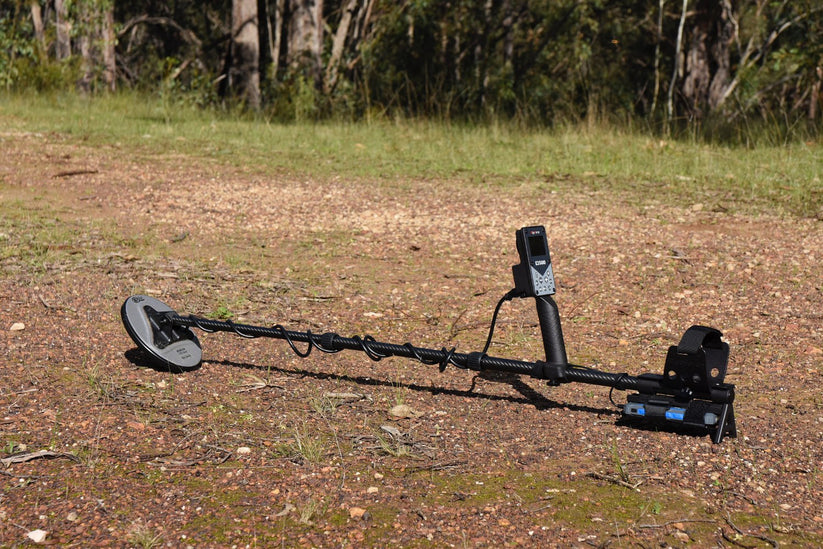
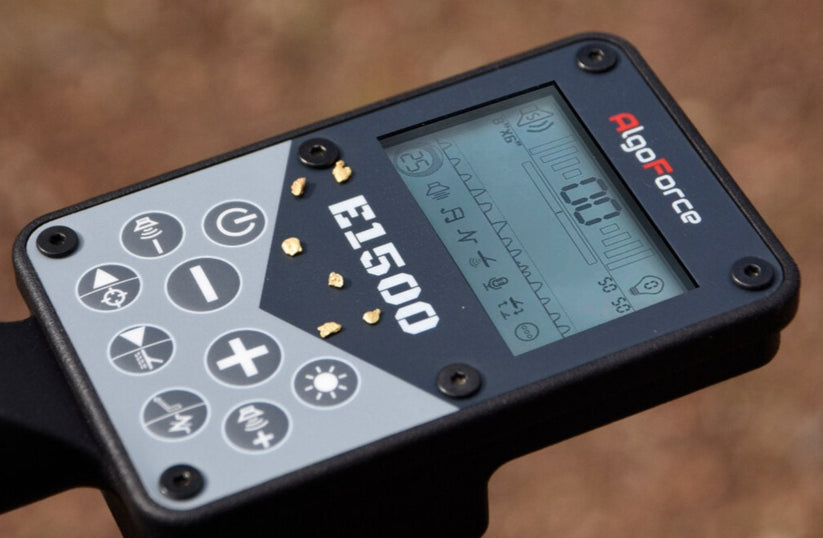
-
-
2 minutes ago, phrunt said:
Certainly not me, that was a point of great excitement 🙂 The coin, jewellery and relic hunters in the US that use PI's should be super excited about that. The other thing is it's reported to be a stable target ID.
Read that article I just posted - I am getting one asap, love it, right up my alley, going to have fun with this one for sure!! Go FCC go!!!
-
-
We have a new player on the field in the form of AlgoForce and their new E1500 detector. One thing that is not getting as much attention as I would expect from a PI - full range target conductivity id. From the owners manual:
"For experienced PI users accustomed to estimating nugget size from audio cues, the AlgoForce E1500 can also help to estimate size or conductivity through its stable conductive target ID (0-99), even in highly mineralized soils. High single frequency VLF detectors typically struggle with signals on wet ocean sand, where PI detectors are far more capable of detecting through the salt mineralization. Capitalizing on its UltraFine pulse induction technology and stable conductive target ID (0-99), the AlgoForce E1500 excels on the beach, proving to be a versatile tool for searching fine jewelry, coins, rings, and other treasures." (Emphasis added)
The discrimination feature kicks in when using the pinpoint mode. Again, from the manual:
VIII. Pinpoint detected target (if needed) Enter the Pinpoint UI by pressing the Left/Pinpoint button in the Main Detection UI. In the Pinpoint UI, adjust Sensitivity with the Minus or Plus button. To retune the detection threshold due to ground variation or temperature drift, press the Left/Pinpoint button as needed. Perform Auto GB if needed by holding the Right/Auto GB button. Return to the Main Detection UI by pressing the Return/Auto FS button.
Pinpoint is a non-motion mode where the coil doesn't have to move to indicate a target. The detection signal gets stronger as the coil approaches the target, causing the audio (if audio output is on) or vibration (if vibration mode is on) to intensify. The Conductive Target ID (0-99) displayed in the Pinpoint UI remains stable even in highly mineralized soils. A higher number indicates a larger or more conductive target. To obtain an accurate target ID, it is recommended to follow these steps:
- Move the coil away from but close to the target.
- Ensure the coil is resting on the ground surface and press the Left/Pinpoint button to retune.
- After that, slide the coil on the ground surface until the target is positioned just below the center of the coil.
The target ID is also useful for assessing the target's shape. If the target ID fluctuates significantly when the coil is moved slightly off but still above the target, it likely indicates an irregularly shaped target, such as a bottle cap or a nail with a large head.
Target conductivity is not the same as VLF discrimination in that both ferrous and non-ferrous are conductive. Stuff that is small or low conductive reads low numbers and stuff that is large or high conductive reads high numbers. Ferrous can read anywhere depending on various factors, so the usefulness of the system largely depends on the nature and mix of targets you are working with.
Nowhere does the AlgoForce manual refer to ferrous versus non-ferrous discrimination. It specifically refers to the Conductive Target ID - in other words, a measurement of how conductive the target is whether ferrous or non-ferrous.
Most GBPI users have savvied to the fact that the high and low tones give a rough indication of target size. A hi or hi-lo tone usually means small or low conductive targets and a low or lo-hi tone usually means large or high conductive targets. You get ferrous either way, just small ferrous on one side and large ferrous on the other. However, in certain gold locations concentrating on hi or hi-lo tones only can be remarkably effective at cherry picking gold nuggets out of a nail pit. Most gold I find almost always gives a hi-lo tone.
Minelab employs a method where targets blank if ferrous, and Garrett the target grunts if ferrous. The Garrett method is preset, the Minelab method can employ a variable control depending on the model. What makes the AlgoForce different is instead of the "this or that", "yes or no" answer of two categories you get a full range indication, which with experience should lead to more nuance in what can be dug and what can be ignored.
PI discrimination is not the same as VLF discrimination. There are different aspects to it that require a savvy operator. There are a lot of half truths and incorrect statements tossed around by people who don't know much on the subject. One of the most common claims I hear is that PI disc only works at shallow depths, and that the things you have to do to implement it give up the extra depth that is the reason for using a PI in the first place. This is based on some versions of PI discrimination and so can be true, but also reflects that the person making such statements is not well versed in all aspects of the subject. You can indeed discriminate to full depth with a PI, and in fact that is the only way I have been doing it for almost 20 years now. For more details on how pulse discrimination works see my long analysis at the thread below. No, it’s not VLF discrimination, but you’d be amazed what good PI operators can do with the capability they do have.
We have a winner in the Under 4 Pound, Under $2000 GBPI Challenge!
AlgoForce E1500 Specifications and User Manuals
Visit the new AlgoForce Metal Detector Forum
-
18 hours ago, EL NINO77 said:
...It is also a surprise..that some "experienced American testers" do not know how the detector works from the negative scales of the VDI identification target..which was the domain of the American detectors of the Whites brand...how to use such a negative discrimination setting for better detection of non-ferrous metals target... where for some experienced detectorists it is a normal everyday practice...
No surprise at all. Job one is to attract eyeballs by either being entertaining or being controversial. Being first also beat being right. Being knowledgeable is low on the list when it comes to getting an audience. Some of the most ignorant people making the wildest claims can attract the widest audiences in this day and age.
-
5 hours ago, karelian said:
I hope this machine succeeds and the company goes on to bigger and better. It's price point does not challenge the leaders in the game, it is a much lower priced option. I'm old enough to remember when MInelab started out with VLF machines and then succeeded with their PI machines. Starting at a lower price is a smart move for a company given the dominance of the competion. Ground grab is a step up for some of us on a PI, coming from older White's Tdi machines. Quality of manufacture, operational stability, accuracy of the ground balance, performance in the field are other factors and the real important questions for me. For operators of the latest Minelab machines this machine is a step back, but at this price point some of us are still interested. For the money I do not expect a 'Holy Grail' detector, but I do like what I see and find myself interested in the potential. It is what it is, not a Minelab.. Size, weight, power and coil options all combine to make a light weight budget PI. I for one can live without ground tracking if a ground grab function is stable and accurate. Very early days and looking forward to user experience and videos. As an Australian I hope we have another successful metal detector manufacturer following in the footsteps of Minelab. Healthy competition, local jobs and it is just all good for electronic prospects to have more budget friendly options.
All the best.
Totally agree, could not have said it better myself!



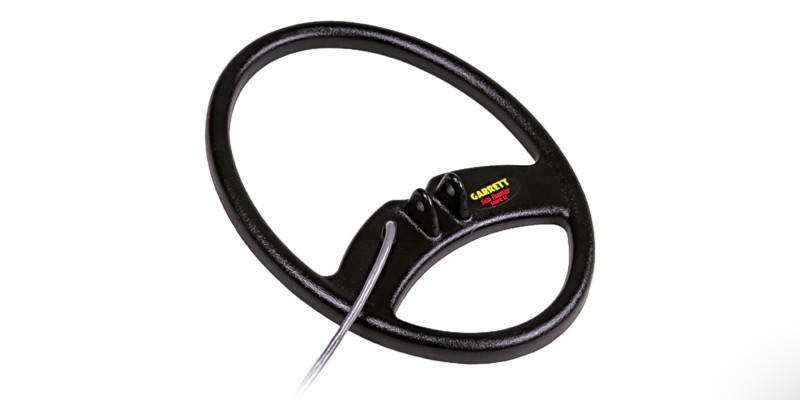

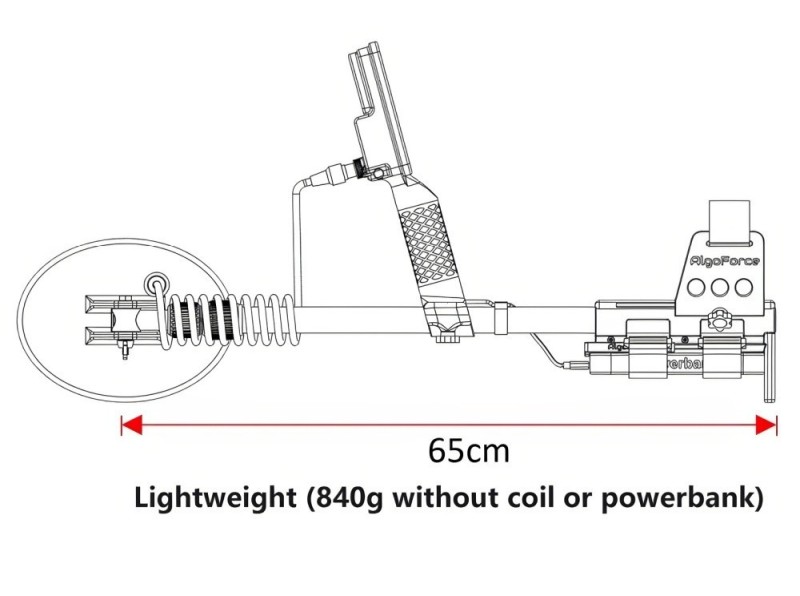
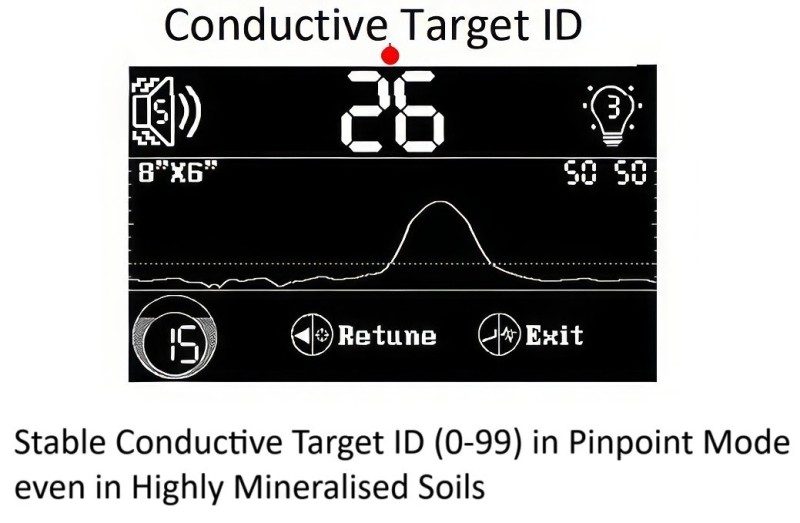
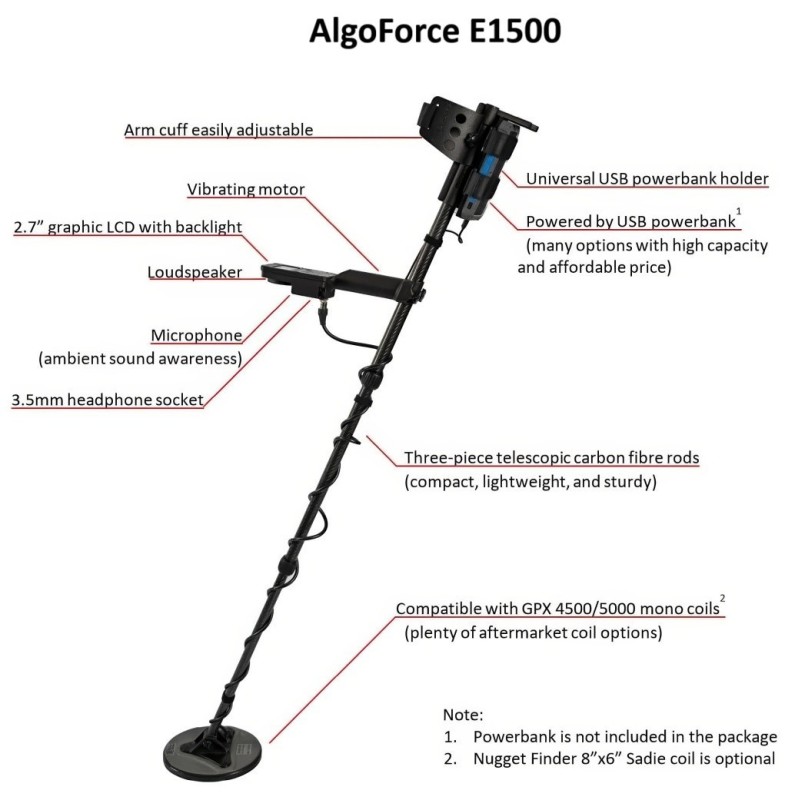
AlgoForce E1500
in AlgoForce Metal Detectors
Posted
The AlgoForce does indeed change things with what it brings to the table for me but if not for anyone else…. whatever. I 100% advocate digging everything, every target. Yet what do you do when you have two hours and are looking at a nail filled trash pit? I’m going to cherry pick my targets. And the additional information the AlgoForce is offering me is going to enhance that ability for me in my hands. It gives me more information while not taking away anything from me. It makes no decisions for me, unlike the Minelab and Axiom systems. But I can see why for others it changes nothing and is not worth even considering or trying, and that’s fine. Nobody and I mean nobody needs one of these…. except me. I know what I want and have a plan so enough from me on this subject.